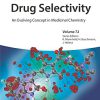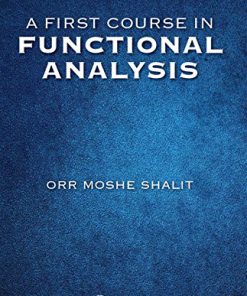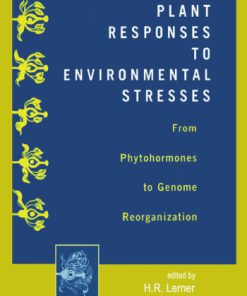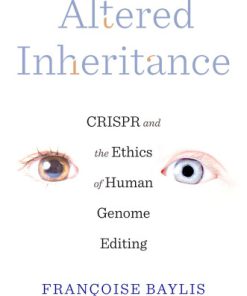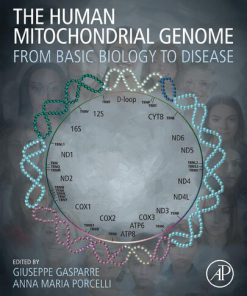Functional Analysis of the Human Genome 1st Edition by Farzaneh, Cooper 1000140965 9781000140965
$50.00 Original price was: $50.00.$25.00Current price is: $25.00.
Functional Analysis of the Human Genome 1st Edition by F. Farzaneh, D. N. Cooper – Ebook PDF Instant Download/DeliveryISBN: 1000140965, 9781000140965
Full download Functional Analysis of the Human Genome 1st Edition after payment.
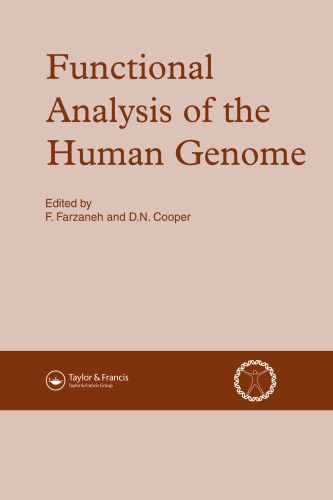
Product details:
ISBN-10 : 1000140965
ISBN-13 : 9781000140965
Author: F. Farzaneh, D. N. Cooper
An excellent review of the relationship between structure and function in the human genome, and a detailed description of some of the important methodologies for unravelling the function of genes and genomic structures.
Functional Analysis of the Human Genome 1st Table of contents:
1 Structure and function in the human genome.
Introduction
Chromatin structure and transcription
Chromatin structure
Nucleosome positioning
Transcriptional domains
Chiasmata, recombination and recombination hotspots
Scaffold attachment regions
Centromeres
Telomeres
Origins of DNA replication
Genes
Gene structure and organization
Pseudogenes
Functional organization of human genes
Repetitive sequence elements
Tandem repeats
Alu sequences
LINE elements
Endogenous retroviral sequences
Transcriptional regulation
Promoter elements
Enhancers
Negative regulatory elements
Locus control regions
Boundary elements
Trans-acting protein factors
Sequences involved in transcriptional termination
mRNA splicing and processing
Sequences involved in determining mRNA stability
Role of sequences in 5′ untranslated regions
DNA methylation
Distribution of 5-methylcytosine
Replication of the methylation pattern and de novo methylation
Role of DNA methylation in the regulation of transcription
Role of DNA methylation in X-inactivation
Changes in DNA methylation during embryogenesis
DNA methylation and imprinting
References
2 Mapping the human genome.
Introduction
Markers
Gene sequences
DNA polymorphisms
D-segments
Sequence-tagged sites
Inter-Alu PCR probes
Allele-specific oligonucleotides
Cytogenetic mapping
Somatic cell hybrid analysis
Radiation hybrid mapping
Fluorescence in situ hybridization
In situ PCR
High-resolution physical mapping
Yeast artificial chromosome cloning
Contig assembly
Pulsed-field gel electrophoresis and CpG island mapping
Chromosome jumping/linking libraries
DNA sequencing
Progress in physical mapping
Genetic mapping
Transcription map of the human genome
Comparative gene mapping
References
3 Cloning the transcribed portion of the genome.
Introduction
Gene detection
Preparation of target material
Isolation of total RNA
Isolation of mRNA
Preparation of cDNA
Selection of specific genes
Library-based cDNA cloning strategies
Construction of a cDNA library
Screening cDNA libraries
Manipulation of identified cDNA sequences
PCR-based isolation of genes from cDNA
Primer design
Mixed-pool or redundant oligonucleotide primers
Primary PCR reaction
Isolation of the 3′ end of a cDNA
Isolation of the 5′ end of a cDNA
Gene identification by differential display
Expression systems
Expression using E. coli
Eukaryotic expression systems
References
4 Retroviral insertional mutagenesis.
Introduction
The retroviral life cycle
Host range
Replication-defective retroviral vectors
Packaging cell lines
Conditions required for efficient mutagenesis
Mechanisms involved in retroviral insertional mutagenesis
Mutation frequency
Multiplicity of infection
Mutant selection procedures
Cloning of the sites of provirus integration
Construction of genomic libraries
PCR-mediated amplification
Identification of the gene of interest
Identification of common sites of provirus integration
Library screening by nuclear run-on probes
References
5 Gene entrapment.
Introduction
Gene trap vectors
Cloning and analysis of flanking sequences
Isolation and use of promoter-tagged sites
Insertional mutagenesis in cultured cells
Insertional mutagenesis in mice
Identification of regulated genes
References
6 Gene transfer studies.
Introduction
What is transfection?
What form should the DNA be in?
Generalized requirements for eukaryotic gene transcription
Eukaryotic gene transcription
SV40-based plasmids
Specialized eukaryotic host cells
Specialized plasmids
Double insert plasmids
Inducible expression
Epstein–Barr virus-based plasmids
Shuttle vectors
Multifunctional plasmids
Transfection procedures
Calcium phosphate co-precipitation
DEAE–dextran
Electroporation
Liposomes and lipid-based transfection
Adenovirus and poly-L-lysine-conjugated complexes
Alternative transfection procedures
Assays for new protein synthesis
Dominant selectable marker genes
Reporter genes
Analysis of cloned genes
Identification of ligands for novel receptors
Identification of transcription factors
References
7 Foreign DNA integration and DNA methylation patterns.
Introduction
The adenovirus system as a model
Site selection in the integration of adenovirus DNA
Modes of adenovirus DNA integration – a synopsis of data
On the mechanism of integrative recombination
Insertion of foreign DNA by a versatile mechanism
Studies on the mechanism of integrative recombination in a cell-free system
De novo DNA methylation of integrated foreign DNA
De novo methylation of integrated foreign DNA: a cellular defence mechanism?
Initiation of de novo methylation in mammalian cells is not predominantly dependent upon the nucleotide sequence of foreign DNA
Methylation of triplet repeat amplifications in the human genome: manifestation of the cellular defence mechanism
Alterations in patterns of cellular DNA methylation and gene expression as consequences of foreign DNA insertions into mammalian genomes?
DNA methylation and gene activity
A fully 5′-CG-3′ but not a 5′-CCGG-3′ methylated late FV3 promoter retains activity
Topology of the promoter of RNA polymerase II- and III-transcribed genes is modified by the methylation of 5′-CG-3′ dinucleotides
Impact of 5′-CG-3′ methylation on the activity of different eukaryotic promoters: a comparison
Uptake of foreign DNA through the gastrointestinal tract
A concept of oncogenesis – implications for gene therapy and research on transgenic organisms
References
8 Transgenic animals in human gene analysis.
Introduction
Methodology
Transgenes to study gene regulation
Transgenes to study gene function
Functional analysis: gain-of-function
Functional analysis: loss-of-function
Conclusions
References
9 Homologous recombination.
Introduction
Embryonic stem cells
Principles of homologous recombination in mammalian cells
Targeting vectors
Promoterless constructs
Positive–negative selection procedure
Hit-and-run and in-out targeting strategies
Potential of homologous recombination in embryonic stem cells
Developmental biology
Animal models of human disease
Homologous recombination and gene therapy
Future perspectives: Cre–LoxP mediated gene targeting
References
10 Complementation analysis.
Introduction
Principles of somatic cell hybridization
De novo and salvage pathways of nucleotide synthesis
Purine nucleotide synthesis
The HPRT gene
HPRT variants
Pyrimidine nucleotide synthesis
Metabolic cooperation
The HAT selection system
Selection procedures for the isolation of hybrid cells
Identification of complementation groups and topological relationships
Extinction and activation
Assignment of complementation groups in clinical diseases
Assignment of complementation groups in senescence
Assignment of complementation groups in biochemical pathways
Assignment of complementation groups in cytokine activity
Identification of the dominant/recessive nature of genetic lesions
Chromosome segregation
Dominant and recessive genetic changes involved in senescence
Dominant and recessive nature of viral genes
Dominant and recessive events in tumour progression
Dominant nature of multi-drug resistance genes
Dominant and recessive events involved in immunological processes
Dominant and recessive developmentally regulated genes
Microcell fusion: principles and application to the chromosomal localization of genes
Introduction to microcell fusion
General principles for microcell-mediated transfer
Pinpointing chromosomes involved in specific disease processes
Identification of tumour suppressor genes
Identification of genes involved in cellular senescence
References
11 Antisense oligonucleotides: a survey of recent literature, possible mechanisms of action and therapeutic progress.
Introduction
Some examples of antisense action in different systems
Targeting and design
Uptake of antisense oligonucleotides
Toxicity of antisense oligonucleotides
Modifications to the structure of antisense oligonucleotides
Possible mechanisms of action
Steric inhibition
RNase H-like cleavage of target RNA
Triplex DNA formation
Double-stranded oligonucleotides
Circular oligonucleotides
Ribozymes
Non-specific cleavage of host RNA
Therapeutic applications
People also search for Functional Analysis of the Human Genome 1st:
functional genomic analysis test
functional genomics research
analysis of the human genome revealed
what is the goal of functional genomics
bioinformatics and functional genomics pdf
Tags: Functional Analysis, the Human Genome, Farzaneh, Cooper
You may also like…
Business & Economics
Export Performance and the Pressure of Demand A Study of Firms First Edition Cooper
Mathematics - Functional Analysis
Functional Analysis in Applied Mathematics and Engineering First Edition Pedersen
Science (General)
Plant Responses to Environmental Stresses 1st Edition by Lerner ISBN 1351424092 9781351424097
Education Studies & Teaching - School Education & Teaching
Altered Inheritance CRISPR and the Ethics of Human Genome Editing Françoise Baylis
Biology and other natural sciences - Molecular
Mathematics - Functional Analysis
Biology and other natural sciences - Genetics



